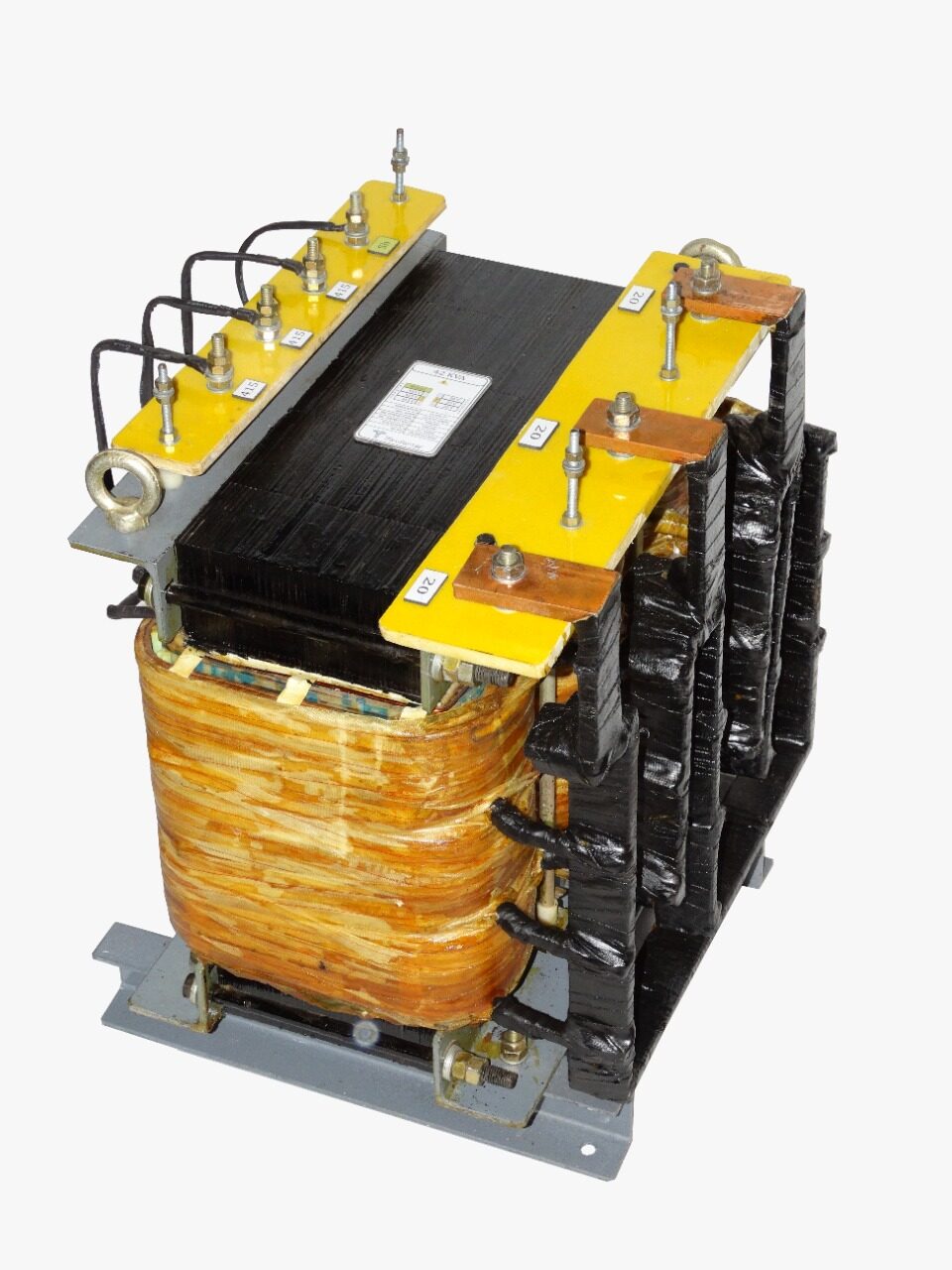In Transformers
Current Injecting Transformer
These transformers are used to inject current into the system to test their insulation levels, Conducting Heat-Run Testing, and check the performance of the system at the required current Level.
These Transformers are nothing but step-down transformers with a high current capacity withstanding winding. The voltage of the secondary winding is generally low which is designed as per the system requirement.
Product Features
- Enclosed coils completely enclose the transformer coils against moisture, dirt, dust, and industrial contaminants for maximum protection in industrial environments.
- Finger-safe terminals provide a great terminal contact area which permits low-loss connections.
- Mounting Clamps are made of heavy steel to add strength to core construction and provide stability. Slotted mounting feet permit easy and flexible installation.
- Attractive epoxy coated black matte finish, easy-to-read label with complete technical details.
- Constructed with high quality silicon steel laminations to minimize core losses and increase performance and efficiency. The core is constructed using the “Hole-Less” method thus minimising the magnetic reluctance and decreasing the No-Load Current (NLC) and No-load Watt Losses.
- Super Enamelled Copper or Aluminium wire of the highest quality assures efficient operation.
- Primary and secondary fusing options available in kits or factory installed on request.
Product Classifications
- VA Burden: 15 VA – 100 KVA
- Current Capacity: From 100 Amps to 1000 Amps
- Vector Group: As per the requirement
- Conductor Type:
- Copper
- Conductor Covering Type:
- Enamelled ‘F’ Class
- Enamelled ‘H’ Class
- Paper Covered
- Fiber Glass Covered
- Enamelled Conductor Covered in Fiber Glass
- Core Type: Cold Rolled Grain Oriented (CRGO) Laminated Silicon Steel
- Rectangular Strips
- Miter Strips
- E-I Type for Small Transformers
- Varnishing Type: Vacuum Pressure Impregnated and Epoxy Coated
- Terminal Type: Wago, Phoenix, Brass Bolts
- Clamping: Solid Angles and ‘C’ Channel
- Clamping Bolts: High Tensile Bolts


